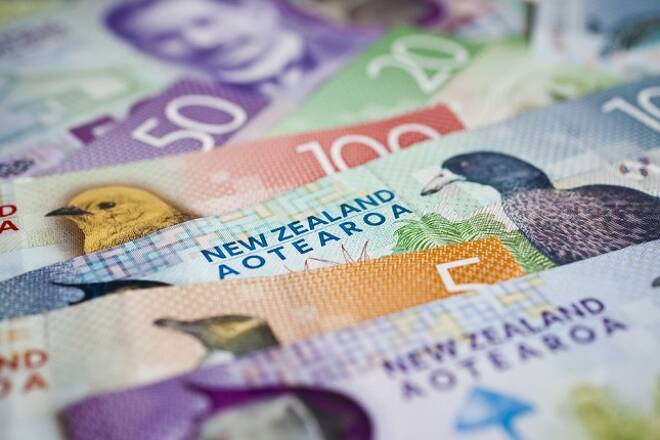Advertisement
Advertisement
NZD/USD Forex Technical Analysis – Main Trend Changes to Down; Successfully Tested 50% at .6607
By:
Based on the earlier price action, the direction of the NZD/USD into the close is likely to be determined by trader reaction to the short-term 50% level at .6607. The late session intraday rally could stop at .6637 to .6647.
The NZD/USD plunged on Friday before stopping at a short-term 50% level. The selling was fueled by better-than-expected non-farm payrolls data, which helped improve the entire jobs report. The news dampened the chances of a Fed rate cut at the end of July enough to spike the benchmark 10-year U.S. Treasury yield back over 2%. This made the U.S. Dollar a more attractive investment, while encouraging New Zealand Dollar buyers to lighten up on the long side and take profits after a nearly three-week rally.
At 19:58 GMT, the NZD/USD is trading .6625, down 0.0062 or -0.93%.
Daily Technical Analysis
The main trend is down according to the daily swing chart. A trade through .6656 changed the main trend to down. A trade through .6720 and .6727 will change the main trend to up.
The short-term range is .6487 to .6727. Its retracement zone at .6607 to .6579 was the primary downside target. A test of this zone at .6602 may have attracted new buyers, helping to put in the low for the session.
On the upside, the resistance is the main retracement zone at .6710 to .6764. This stopped the rally on July 1 at .6727 and on July 4 at .6720.
Daily Technical Forecast
Based on the earlier price action, the direction of the NZD/USD into the close is likely to be determined by trader reaction to the short-term 50% level at .6607.
Bullish Scenario
Holding .6607 near the close will indicate the presence of buyers. This could lead to a test of an uptrending Gann angle at .6637, followed closely by a downtrending Gann angle at .6647. Since the main trend is down, this should stop the intraday rally. However, overtaking .6647 will indicate the buying is strengthening.
Bearish Scenario
The late session intraday rally could stop at .6637 to .6647. However, the trigger point for an acceleration to the downside is the 50% level at .6607. If taken out late in the session, don’t be surprised by a break into the short-term Fibonacci level at .6579.
About the Author
James Hyerczykauthor
James Hyerczyk is a U.S. based seasoned technical analyst and educator with over 40 years of experience in market analysis and trading, specializing in chart patterns and price movement. He is the author of two books on technical analysis and has a background in both futures and stock markets.
Latest news and analysis
Advertisement
